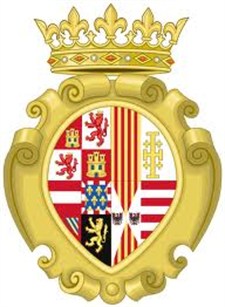Kingdom of Naples
 The kingdom of Naples became an autonomous entity with the division in two of the Kingdom of Sicily, a consequence of the revolt of the Vespers and the war that followed (1282-1302). The Angevins, who reigned from 1266 over Sicily and Naples, lost the island, defeated by the Aragonese, but kept the peninsular part of the kingdom. In 1442 Alfonso V the Magnanimous of Aragon (1396-1458) finally defeated the Anjou, conquered Naples and reunified the two states under one ruler. The two kingdoms, however, retained the nominal distinction that would only be eliminated in 1816, with the birth of the Kingdom of the Two Sicilies. After a brief French occupation (begun in 1494), since 1503 the kingdom of Naples was subject to Spain, which ruled it through a viceroy. In 1647 the outbreak of the uprising, afterwards called the Masaniello revolt, was quelled by the force of arms in April of the following year. During the War of the Spanish Succession (1701-1713), the kingdom of Naples passed to the Austrian Habsburgs. In 1734, Charles of Bourbon (1716-1788, the son of Philip V of Spain) recaptured the capital. The Treaty of Vienna (1738) recognized Charles as king of Naples and Sicily, marking the foundation of the establishment of an independent kingdom.
The kingdom of Naples became an autonomous entity with the division in two of the Kingdom of Sicily, a consequence of the revolt of the Vespers and the war that followed (1282-1302). The Angevins, who reigned from 1266 over Sicily and Naples, lost the island, defeated by the Aragonese, but kept the peninsular part of the kingdom. In 1442 Alfonso V the Magnanimous of Aragon (1396-1458) finally defeated the Anjou, conquered Naples and reunified the two states under one ruler. The two kingdoms, however, retained the nominal distinction that would only be eliminated in 1816, with the birth of the Kingdom of the Two Sicilies. After a brief French occupation (begun in 1494), since 1503 the kingdom of Naples was subject to Spain, which ruled it through a viceroy. In 1647 the outbreak of the uprising, afterwards called the Masaniello revolt, was quelled by the force of arms in April of the following year. During the War of the Spanish Succession (1701-1713), the kingdom of Naples passed to the Austrian Habsburgs. In 1734, Charles of Bourbon (1716-1788, the son of Philip V of Spain) recaptured the capital. The Treaty of Vienna (1738) recognized Charles as king of Naples and Sicily, marking the foundation of the establishment of an independent kingdom.
Read more:
-
G. Galasso, Storia del Regno di Napoli, 6 voll., Torino 2006.
